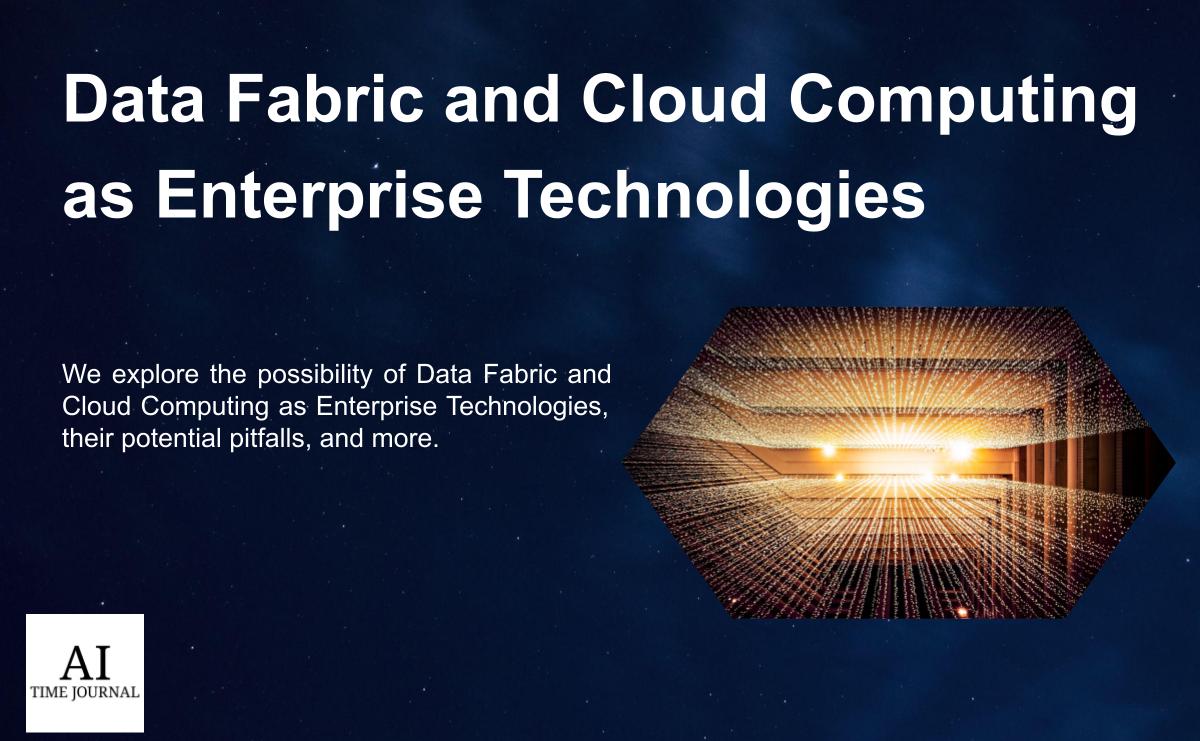
The field of Big Data is subject to the forces of exponential growth. As enterprises become more data-driven, they require scalable and efficient platforms that facilitate data integration across a variety of business domains. These platforms must retain a certain level of structural flexibility while also promoting multi-domain collaboration.
By employing data fabric approaches in conjunction with cloud computing and storage, enterprises can ensure that they keep up with the exponential growth of data surplus. Moreover, they can build data-driven platforms that are efficient, secure, and cost-effective at scale, effectively streamlining their abilities to process and analyze large datasets.
There are several service providers who can facilitate this process, offering tools and expertise that enhance the utilization of data fabric and cloud computing technologies. Companies like Verticomm, for instance, are equipped with the knowledge and resources to assist enterprises in building and maintaining these advanced data architectures. With their help, enterprises can seamlessly transition to scalable data platforms while also ensuring data security and cost efficiency. This shift not only boosts operational performance but also empowers enterprises to harness the full potential of their data assets.
As information technology becomes more embedded in everyday life, for instance through the implementation of IoT technology, businesses will be able to reap the benefits of new sources of behavioral data surplus. In this case, a given business’ comparative market advantage will be heavily influenced by its data acquisition and processing infrastructure; it is imperative that businesses implement data infrastructure designs that can accommodate new sources of behavioral data surplus.
The data fabric approach, while novel, would allow businesses to maintain steady growth and revenue in the face of rapid technological innovation while also creating a robust data infrastructure that spans throughout every function and domain of the enterprise.
Data Fabric
The exponential growth of Big Data has made it difficult to manage at the enterprise level due to its ever-increasing complexity. Data fabric can reduce the dimensionality of this problem by creating a unified hybrid or cloud-based data architecture that actively integrates various data pipelines (computational tools/processes that automate data transformation and movement), emerging technologies and cloud services into one coherent platform.
The design of this platform is meant to fast track an enterprise’s attempts at digital transformation. Conventionally, enterprises would encounter the following three problems during this transformative process:
- The development of Data Silos: isolated reserves of data that pertain to and are controlled by specific departments or sectors within a business.
- Decision-making bottlenecks: a drastic increase in the amount of data an enterprise acquires can overwhelm its capacity to process and understand it, effectively hindering a professional’s ability to make timely and efficient decisions at the enterprise level.
- An increase in the likelihood of Cybersecurity Breaches: as enterprises expand their data infrastructure, they also have to derive new ways to store and manage data they acquire. Without an integrated approach, it is highly difficult to track the movement of data throughout various enterprise domains and ensure it is stored and utilized securely.
Fortunately, data fabric approaches allow enterprises to build a holistic representation of their data that reflects previously unidentified or novel patterns throughout the customer life cycle. For instance, every enterprise is composed of several functionally distinct departments ranging from HR and Customer Support to Supply Chain Management and Business Analytics.
However, cross-departmental data communication and analysis is extremely difficult to implement when dealing with data silos, especially when considering the notion of data gravity (the idea that as datasets increase in size they become more difficult to move). By unifying data infrastructure such that all the aforementioned domains are included, businesses can pinpoint correlations between data points that provide much-needed insight into the customer life cycle.
This integrative process is supported by data virtualization: a technology that allows enterprises to connect all of their data sources in a cloud-based architecture that then extracts meta-data and uses it to build a virtual data layer. This imbues enterprises with the ability to analyze and leverage their source data in real-time while also allowing them to bypass the conventional method of ETL (extract, transform, load).
Data Fabric Design
The primary purpose of data fabric is to streamline data ingestion and integration by building connections between data sources and relevant applications. If an enterprise were to adopt a multi-cloud-based architecture, it could incorporate various task-relevant cloud services, from Infrastructure as a Service (IaaS) and Platform as a Service (PaaS) to Software as a Service (SaaS), effectively cultivating a synthesized and holistic view of their data.
The beauty of data fabric approaches is contained in their versatility. They recognize that different businesses may have different needs, all of which can be compounded within a unified data architecture. Nonetheless, there are six primary components of data fabric architecture that warrant consideration:
- Management Layer: This layer forms the foundation of the data fabric architecture. It allows users to govern their data and maintain security protocols.
- Ingestion Layer: This is where data is compounded and connections between unstructured and structured datasets are identified.
- Processing: This is where data is filtered and refined; only relevant data is left after processing for data extraction.
- Orchestration: This is the ‘heart’ of the data fabric architecture. Here, data is cleansed, integrated, and transformed for the purpose of usability by the various business teams throughout an enterprise.
- Discovery: This layer is where new integration opportunities for dissimilar data sources are discovered. For instance, connections between HR and customer satisfaction data could be identified to help better facilitate and uphold customer relationships.
- Access: This layer is where data is consumed and monitored to ensure that data-driven teams are complying with relevant regulatory frameworks and permissions. Here, teams can also apply data visualization and dashboard tools that help surface important data points.
These various layers will underlie every data fabric architecture. However, enterprises can customize certain functions on a layer-by-layer basis by employing function-specific cloud services and Machine Learning tools. This flexibility also upholds the notion of future-proofing: the idea that as new technologies and data processing/management tools emerge, they can be actively incorporated into the data fabric architecture.
Enterprise Cloud Computing
Cloud computing is relatively straightforward: it describes a network of remotely located and interconnected servers that help the process, store and manage data. However, cloud computing at the enterprise-scale is distinctive; it is when businesses purchase cloud services from both public and private providers to increase data processing and storage capability, streamline network infrastructure, and data virtualization.
There are a number of benefits to this technology at the enterprise scale. First, implementing cloud services that are offered on a pay-per-use basis provides businesses with a cost-effective data management strategy; instead of having to build their own hardware and software, businesses can partner with cloud providers and use the arsenal of data processing, managemen, and storage tools they offer.
Second, enterprise cloud services are flexible by design, allowing businesses to pursue digital transformation in a scalable and efficient way. Whether a given business is testing a product launch on its customers or simply trying to gain more insight into the business-consumer relationship, enterprise cloud services can provide solutions that consider the evolution of resource consumption in conjunction with scalability.
Third, enterprise cloud services offer better data and network security. There are two main reasons for this:
1) Data servers are typically located off company premises, making them inaccessible to employees, which is especially important when considering that 95% of data breaches are internal.
2) All the information stored in cloud-based servers is encrypted, making it especially difficult to access remotely.
Finally, enterprise cloud services offer a number of tools that facilitate collaborative data-sharing across business domains as well as automation functions that streamline software updates and data integration practices. These tools allow enterprises to build a resilient and efficient business model that considers the changing tides of innovation.
Potential Pitfalls
Data fabric solutions and cloud computing at the enterprise level, while they offer many benefits for businesses, do possess some drawbacks.
While data fabric architecture has the ability to remedy the problem of data silos, its implementation could actively facilitate the emergence of organizational and technical silos. The presence of these silos would likely impede the process of digital transformation, and force businesses to seek out costly solutions.
Finally, as enterprises, their business will become increasingly complex. While data fabric and cloud computing can evolve alongside this complexity, they are difficult to implement in practice, especially as new data sources are discovered, processed, and managed.
